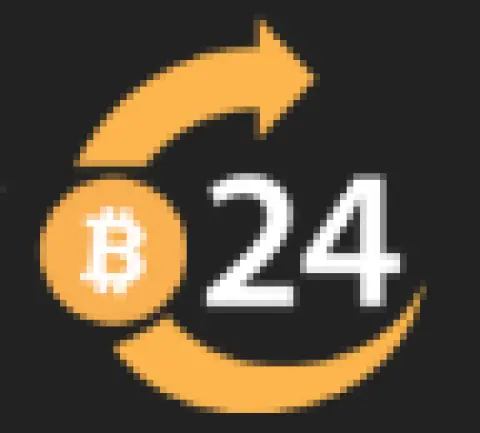Table of Contents:
Understanding Altcoins: The Basics for Beginners
Altcoins, or alternative coins, are cryptocurrencies that emerged after the success of Bitcoin and now play a significant role in the digital currency landscape. They offer various technological advancements, utility, and investment opportunities that differ from the Bitcoin model. For a beginner venturing into the world of altcoins, it's crucial to grasp the fundamental aspects of these digital assets.
Firstly, altcoins strive to improve upon or offer different characteristics than Bitcoin. This includes faster transaction speeds, enhanced privacy features, or a more eco-friendly approach to mining. Each altcoin has its own unique value proposition which caters to specific needs and goals within the cryptocurrency market.
Secondly, the altcoin market is known for its volatility but also for its potential for significant returns. With the right knowledge and strategies, traders can capitalize on price movements to generate profits. However, it involves thorough research and a strong understanding of market dynamics.
Lastly, becoming a savvy altcoin trader begins with education. Understanding blockchain technology, how altcoins function, and the market forces at play are fundamental steps to becoming proficient in the art of altcoin trading.
As a beginner, it's also recommended to familiarize oneself with the various categories of altcoins such as utility tokens, security tokens, and stablecoins, each serving different purposes within the crypto ecosystem. By delving into the diverse world of altcoins, one can begin to appreciate the intricacies and opportunities that lie within the crypto trading domain.
Navigating the Altcoin Market: Strategies for Success
Successful navigation of the altcoin market requires specific strategies that can help traders make informed decisions and manage their investments effectively. One fundamental approach includes technical analysis, using charts and historical price data to predict future market movements. Traders often look for patterns and use various indicators to identify entry and exit points.
Another critical strategy is fundamental analysis, which involves evaluating an altcoin's underlying value. This can include assessing the project's whitepaper, the team behind the coin, use cases, adoption rates, and potential for long-term success. Strategic investors prioritize coins with solid fundamentals that are more likely to withstand market fluctuations.
Diversification is also a crucial element for managing risk. By spreading investments across various altcoins and sectors, traders can reduce the impact of a single coin's performance on their overall portfolio. This strategy is commonly summarized as "don't put all your eggs in one basket."
Additionally, successful altcoin traders maintain discipline with their trading plans and set clear goals. This includes establishing pre-determined risk-to-reward ratios and sticking to them, without letting emotions drive decision-making.
Furthermore, keeping abreast of market news and trends plays an essential role. The cryptocurrency market is highly responsive to news events, and staying updated can provide traders with the crucial insights needed to make timely and effective trades.
In embracing these strategies, traders position themselves to take advantage of the dynamic and fluctuating nature of the altcoin market while aiming to minimize losses and maximize gains.
Pros and Cons of 'The Altcoin Traders Handbook'
| Pros | Cons |
|---|---|
| Comprehensive guide for beginners | May be too basic for advanced traders |
| Provides a thorough understanding of market dynamics | Rapid market changes can outdate some information |
| Discusses risk management strategies | Focuses primarily on altcoins, less so on Bitcoin |
| Offers insight into trading psychology | Trading strategies may not suit every investment style |
| Useful case studies and real-world examples | Some strategies may involve higher risk |
Essential Tools for Altcoin Traders
For those trading in the altcoin markets, equipping oneself with the right tools can be a game changer. These tools not only aid in decision-making but also enhance efficiency and accuracy in trading. A primary tool every trader should utilize is a reliable cryptocurrency exchange that offers a wide variety of altcoins and has robust security measures in place.
Traders also rely heavily on cryptocurrency wallets, which secure their digital assets and provide functionality for easy transactions. It's vital to choose a wallet that supports multiple altcoins and offers features like two-factor authentication for added security.
- Charting software: Essential for technical analysis, good charting software offers a range of indicators and tools to analyze price action.
- Trading bots: Automated trading bots can help execute trades 24/7 based on predefined conditions, allowing traders to take advantage of opportunities even when they are not actively monitoring the markets.
- Portfolio trackers: These tools help traders monitor their investments' performance in real-time, providing insights into profit and loss and asset distribution.
- News aggregators: Real-time news apps and websites keep traders informed about market-moving events as soon as they happen.
- Crypto tax software: As taxes can be complicated for cryptocurrency traders, software that can track trades and generate necessary tax documents is invaluable.
In addition to these tools, joining online forums and communities can provide traders with shared knowledge and experiences from fellow traders. It's an excellent way to learn about new tools, strategies, and stay on top of emerging trends.
Ultimately, having a suite of tools at your disposal can provide a comprehensive view of the market and your investments, helping to make well-informed decisions and improve the overall trading experience.
Risk Management in Altcoin Trading
Proficient risk management is the backbone of sustainable trading practices. In the often turbulent altcoin markets, traders must implement strong risk management tactics to protect their capital and continue trading over the long term.
An essential aspect of managing risk is the use of stop-loss orders. A stop-loss order is an automatic sell order placed with an exchange that triggers when the price of an altcoin falls to a certain level, minimizing potential losses.
Implementing position sizing is another key strategy, which means determining the appropriate amount to invest in a single trade based on your total capital and risk appetite. This tactic helps in avoiding overexposure to a loss from a single trade.
- Understanding Market Liquidity: Traders should be aware of the liquidity of altcoins, as low liquidity can lead to substantial slippage when placing large orders.
- Diversifying Investments: Besides spreading investments across various coins, consider investing in different sectors within the cryptocurrency market to reduce systemic risk.
- Regularly Monitoring Investments: Keeping a close watch on your portfolio allows traders to swiftly adapt to any market changes and adjust their strategies accordingly.
Furthermore, embracing the practice of regular profit-taking can secure a portion of your gains and reduce exposure. Many traders reinvest a part of their profits into other potential opportunities or withdraw it as a safeguard against market downturns.
Lastly, continuous learning and adaptation to the market’s fluctuations can not be underestimated. Having a thorough understanding of market trends and staying updated with the latest analysis tools and trade strategies can greatly enhance risk management capabilities.
By incorporating these risk management techniques, traders can minimize their exposure to potential losses and establish a foundation for long-term success in the altcoin markets.
Building a Profitable Altcoin Portfolio
Crafting a profitable altcoin portfolio demands a strategic approach focused on long-term growth and asset diversification. Skilled traders know that a well-composed portfolio is not just about selecting the right assets, but also about balancing them to work in tandem for maximized returns.
Identifying high-potential altcoins is the starting point. This involves research to uncover tokens that present a strong use case, backed by robust technology and a competent team. Projects that solve real-world problems or introduce innovative solutions to the blockchain space are often considered attractive investments.
- Asset Allocation: Decide what percentage of your portfolio will be allocated to different risk categories of altcoins, from large-cap to low-cap tokens.
- Rebalancing: Periodically adjusting your portfolio to align with your initial allocation can help to capture profits and prevent overexposure to riskier assets.
- Patience and Timing: Plan for the long-term and avoid knee-jerk reactions to short-term market movements, trusting in your researched decisions.
It’s also imperative to assess and adjust your portfolio according to market sentiment and technological advancements. Blockchain is a rapidly evolving field, and what was a strong investment a year ago may not necessarily hold the same promise today.
Fostering a dynamic, well-researched portfolio, balanced with a mix of risk levels and industry focuses, can help traders to not only mitigate risks but also increase the probability of substantial returns within the altcoin market.
Timing the Market: When to Buy and Sell Altcoins
Timing is a critical factor that can significantly influence the success of any trade. In the altcoin market, the right moment to buy or sell can make the difference between a profitable trade and a loss. It involves a disciplined approach and an ability to interpret market signals effectively.
One common strategy is to buy the dip, which means purchasing altcoins when their prices have dropped and are expected to rise again. This requires a good understanding of market cycles and the factors that drive them.
Conversely, knowing when to sell is equally important. A popular tactic is to sell during a rally, when prices are surging and you have achieved your target profit. This technique requires setting clear objectives and not getting swayed by greed when the market is on an upward streak.
Both buying and selling decisions should be based on solid research rather than impulsive reactions to market noise. Emotional decisions can lead to suboptimal timing, which might result in missed opportunities or unnecessary losses.
- Technical Indicators:Leverage tools like Relative Strength Index (RSI) and Moving Averages (MA) to gauge market sentiment and potential trend reversals.
- Fundamental Events: Keep an eye on scheduled events like product launches or major updates that can impact the value of altcoins.
- Market Trends: Understanding the broader trends in the cryptocurrency market can help predict how altcoins may perform.
Ultimately, the key to successful market timing is a blend of analytical tools, informed insight, and disciplined trading strategies. By cultivating these skills, traders enhance their ability to make astute decisions for buying and selling altcoins.
The Psychology of Altcoin Trading
The realm of altcoin trading is not just about numbers and charts; it's equally about the psychological challenges that traders face. Emotional control and mental discipline are pivotal to maintaining a clear head amidst the highs and lows of the market.
Understanding and managing emotions such as fear and greed is crucial. Fear can cause a trader to sell prematurely in a downturn or to avoid buying in when the market conditions are favorable. Conversely, greed can lead to holding onto an asset too long in hopes of even greater profits, which can backfire if the market suddenly turns.
Overconfidence is another psychological trap where traders might ignore signs of a market reversal due to past successes. This can result in holding losing positions for too long, hoping for a turnaround.
Developing a strong trading mindset involves:
- Creating a well-thought-out trading plan and sticking to it.
- Setting realistic goals and not getting swayed by market hype.
- Being aware of cognitive biases that can influence decision-making.
Moreover, practicing self-reflection regularly can help traders recognize their emotional triggers and learn from their trading experiences. Reflecting on both successful and unsuccessful trades provides valuable insights for improving strategy and execution.
The psychology of trading is a powerful aspect that, when mastered, can help traders navigate the altcoin market with greater confidence and control, contributing significantly to their overall success.
Learning from the Experts: Insights from 'An Altcoin Trader's Handbook'
Gleaning knowledge from seasoned traders can dramatically shorten the learning curve for newcomers to altcoin trading. 'An Altcoin Trader's Handbook' by Nik Patel is an invaluable resource that distills years of trading expertise into actionable advice. This guide helps traders navigate the complexities of the altcoin market with confidence.
The book emphasizes the importance of a methodical approach to trading—from painstaking research to the meticulous construction of a portfolio. Patel's experience shines through as he outlines strategies that focus on long-term profitability rather than short-term gains.
"The art of successful trading is partly due to an understanding of your own psychology." - Nik Patel
Patel also sheds light on the significance of timing in the market, a component that many new traders may overlook. Strategic entry and exit points are critical, and 'An Altcoin Trader's Handbook' provides insight into recognizing optimal moments based on a blend of market analysis techniques.
The book reiterates the need for rigorous risk management, highlighting how essential it is to preserve capital to stay in the game. Understanding risk-reward ratios and setting appropriate stop-losses are approaches given due consideration in his handbook.
Ultimately, Patel's handbook is not just about trading tactics but also about adopting the right mindset. It prepares readers for the emotional rollercoaster of trading and offers wisdom on how to remain focused amidst market volatility.
For anyone serious about trading altcoins, this handbook serves as a comprehensive guide that combines foundational concepts with nuanced strategies, providing a roadmap to navigate the ever-changing landscape of cryptocurrency trading.
Staying Informed: Keeping Up with Altcoin Trends
In the fast-paced world of cryptocurrency, staying informed on altcoin trends is pivotal for any trader who aims to be successful. The continuous influx of new projects and the rapid evolution of existing ones means that the landscape can shift dramatically in a short period of time.
Active engagement with cryptocurrency news platforms is necessary to keep abreast of the latest developments in the altcoin sector. These platforms provide real-time updates on market changes, technological innovations, regulatory news, and other critical factors that can influence altcoin prices.
Subscribing to newsletters from reliable crypto analysts and joining online trading communities can offer a stream of curated information and discussion. These resources often delve deeper into market analysis and may provide valuable insights that are not immediately apparent from market data alone.
Moreover, using social media wisely is key. Following influential figures, developers, and thought leaders on platforms like Twitter can provide early signals on market sentiment and emerging trends. However, it’s important to critically evaluate the information and consider the sources to avoid misinformation.
Finally, attending cryptocurrency conferences and webinars is a proactive step towards understanding the future direction of the altcoin market. These events can offer a chance to hear firsthand from industry insiders about their visions and the potential impact on various cryptocurrencies.
By maintaining a diligent and discerning approach to staying informed, traders can refine their strategies, make more educated decisions, and spot opportunities to capitalize on the dynamic trends within the altcoin marketplace.
The Future of Altcoins: What Traders Need to Know
The trajectory of altcoins is a subject of much speculation and discussion among traders. As the cryptocurrency market matures, understanding the potential future of altcoins could give traders the upper hand in making strategic investment decisions.
Innovation in blockchain technology continues to be a significant driver for the growth and adoption of altcoins. With advancements such as DeFi (decentralized finance) and NFTs (non-fungible tokens), there are continuously new avenues for altcoins to provide value. Traders should watch for projects that are not just technically sound but are also achieving real-world adoption.
Regulatory developments are also something that traders must stay vigilant about. As governments and financial institutions around the world grapple with how to deal with cryptocurrencies, their decisions can have profound impacts on the altcoin markets. Traders need to be aware of the legal landscape and how changes might affect their holdings.
Another aspect to consider is the integration of cryptocurrencies with traditional finance. As more institutions begin to offer crypto-related products and services, the legitimacy and utility of altcoins are likely to increase, potentially leading to greater stability and growth.
The influx of institutional investment into the crypto space suggests a growing acknowledgment of its potential. Traders should monitor the flow of institutional money as it can lead to significant price movements and indicate long-term validation of certain altcoins.
In conclusion, while predicting the future with certainty is impossible, being informed about trends in technology, regulation, and institutional adoption can provide traders with insights into where the altcoin market is headed. Solidifying their understanding in these areas will be instrumental for traders who want to stay ahead in the evolving landscape of digital currencies.
Conclusion: Empowering Your Altcoin Trading Journey
Embarking on an altcoin trading journey can be both exhilarating and challenging. It calls for a well-devised strategy, a solid understanding of market dynamics, and an unwavering commitment to continuous education and risk management. The insights and strategies discussed throughout this guide aim to lay a sturdy foundation for both novice and seasoned traders.
To empower your journey further, it is essential to remember the value of adaptability and flexibility. The altcoin market is ever-changing, and successful traders are those who can pivot and adjust their strategies in accordance with new information and market shifts.
It’s also important to balance the enthusiasm for altcoin trading with a healthy skepticism. Conduct your due diligence, verify sources, and rely on data and sound analysis rather than following the herd. The psychological fortitude to stay calm under pressure and to trade with conviction will separate the proficient traders from the crowd.
In conclusion, the path to becoming a successful altcoin trader is multifaceted. It encompasses a deep comprehension of market fundamentals, hands-on experience with trading tools, disciplined risk management, and an understanding of the human factors influencing market movements. By integrating these components into your trading approach, you are well-equipped to navigate the vibrant and potential-rich world of altcoin trading.
FAQ: Mastering Altcoin Trading with 'An Altcoin Trader's Handbook'
What is 'An Altcoin Trader's Handbook' about?
'An Altcoin Trader's Handbook' is a book by Nik Patel that provides a framework for trading cryptocurrencies, specifically focusing on altcoins. It covers strategies for speculative gains, applying risk management, and following a three-step process of research, accumulation, and distribution of investments for maximizing profits while minimizing risks.
Who is the author of 'An Altcoin Trader's Handbook', and what is his experience?
Nik Patel, known by the pseudonym @cointradernik, is the author of 'An Altcoin Trader's Handbook'. Patel has been an active trader, investor, and advisor in the cryptocurrency space since 2013. He shares his insights and strategies through the book, drawing from his extensive experience in altcoin trading.
What strategies does 'An Altcoin Trader's Handbook' suggest for successful trading?
The book suggests a combination of technical and fundamental analysis as key strategies for successful altcoin trading. It also emphasizes the importance of diversification, having a disciplined trading plan, setting clear goals, and staying updated with market news and trends to effectively manage investments and capitalize on market dynamics.
Can 'An Altcoin Trader's Handbook' help beginners in cryptocurrency trading?
Yes, the book is a comprehensive guide that is designed to help both beginners and more experienced traders. It provides a thorough understanding of market dynamics, discusses risk management strategies, and offers real-world case studies and examples that can be beneficial for traders at all levels.
Where can 'An Altcoin Trader's Handbook' be purchased, and in what formats is it available?
'An Altcoin Trader's Handbook' can be purchased from various online retailers, including Amazon, where it is available in both eBook and paperback formats. The eBook version offers enhanced features such as Sticky Notes on Kindle Scribe, Page Flip, Word Wise, and Enhanced typesetting.












